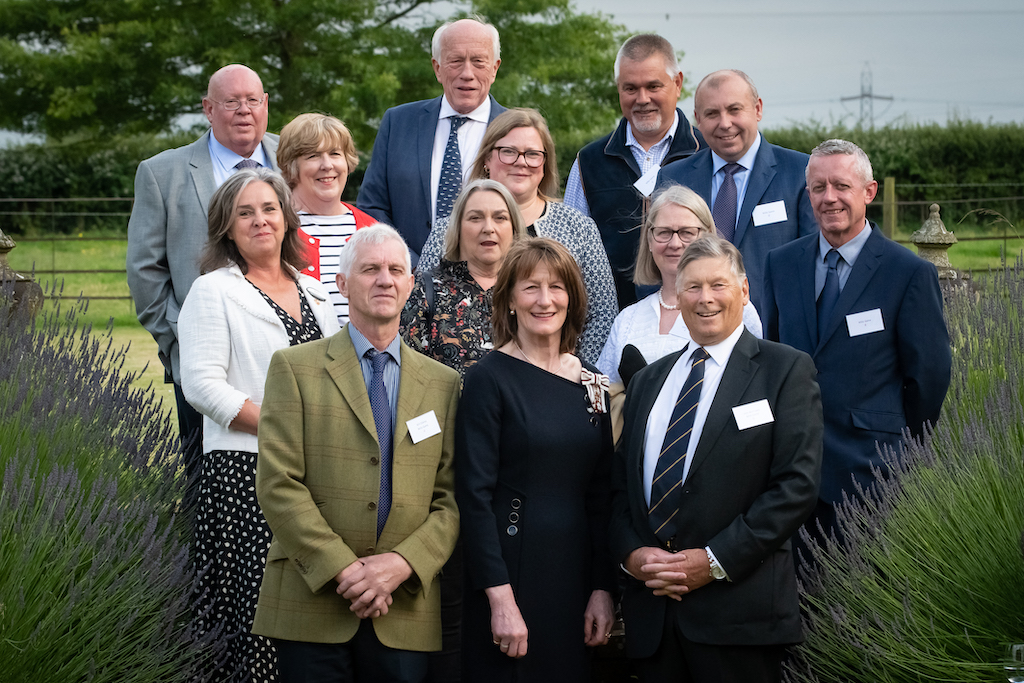A bridge and binoculars prove the perfect combination for Ed to spot a rare sight on the River Severn.
The rocky outcrop of Blackstone overlooks the Severn valley just downstream from Bewdley. Hidden in the layers of rock lies the story of earth history. The red sandstone that gives the rock face its distinctive colour was formed millions of years ago as riverine deposits. The bands of conglomerate within the sandstone are coarse stones that accumulated during high-intensity flash floods. Blackstone was always known as a fording spot on the Severn. Today it is the modern Bewdley Bypass bridge that spans the river here.
Beneath the huge steel girders that form the backbone of the bridge, I watch a female goosander paddling hard against the relentless flow of water. Her sleek body sits low in the water and, with a smooth motion, she dips her sharp bill and dives briefly. From my viewpoint I watch lines of silver bubbles, billowing out behind the goosander like strings of pearls. Her next dive is deeper and longer as she probes underwater roots and refugia for fish. After almost a minute she re-surfaces before peddling across the water towards a shingle bank. As she lands, I spot a smaller bird nearby.

Through the binoculars I can pick out the distinctive shape and behaviour of a dipper. A medium-sized plump bird, the dipper is covered in chocolate brown plumage. On that autumn evening it was the white chest and throat that stood out against the backdrop of the muddy river margin. The bird was working a section of shallow water, wading slowly upstream.
A perfect habitat
I don’t see many dippers on the Severn. In many places the water is too deep and silty. At Blackstone the river is shallow and fast flowing. This is a perfect habitat for the dipper. The bird has relatively long and very strong legs. These help him to wade through the shallow water, head just above the surface. Frequently he disappears completely beneath the surging flow. Underwater the short wings are used to help the bird remain upright. The dipper is a species that passes between the terrestrial and aquatic world with ease. It is completely comfortable navigating the turbulent, spray-drenched surface zone of the river
The dipper takes flight and alights on a stone in the mid-channel, some 20 feet away from me. Droppings on the surface of the stone mark this as a regular perch. From this proximity I am treated to a wonderful display of head dipping, the habit that gave this species of bird its name. The constant bobbing movement makes it look like the dipper is sparring with some invisible adversary. It is not entirely clear what advantage is conveyed by this behaviour. In this dynamic habitat of tumbling waters, it makes sense that the dipper also needs to be constantly moving to avoid being spotted by predators.

From his perch the dipper scans the water. Every so often a white ‘eyelid’ flashes across his eyes. Rather than being a true eyelid, this is actually a transparent membrane that forms a protective lens over the eye allowing the dipper to see clearly underwater. As late summer fades into early autumn, caddisflies are an important source of food. This insect has aquatic larvae. After a couple of years, the larvae pupate and ascend through the water column before emerging from the surface as a winged adult insect. The body adaptations of the dipper allow the bird to feast on caddis larvae, pupae and indeed emerging adults. Much of our knowledge about the diet of dippers has come from studying the droppings and regurgitated pellets left by the birds.
Perils of plastic
In May 2020, a team from Cardiff University and the Greenpeace Research Laboratories at the University of Exeter published research focused on dippers living on a river in South Wales. In 14 out of 15 territories, microplastics were found in droppings or pellets. The scientists calculated that dippers were consuming as many as 200 tiny fragments of plastic a day. This was the first frightening evidence of plastics being ingested by invertebrates and then moving up the food chain in the freshwater environment.
Two young herons crash onto the peaceful scene beneath the bridge. With gangly legs and stabbing bills, they are locked into a territorial battle. The dipper takes flight and heads downstream. He too will defend his territory through the winter months. As early as February, nest building will commence again. With the dark skyline of Ribbesford Woods sharpening against the setting autumn sun, I leave the riverbank and follow a path lined with elderberries back to Bewdley.
Do one thing for wildlife
Microplastics are an invisible assault on our wildest places. This month why not aim to make one change to reduce your plastic waste? Our family took part in the ‘Plastic Free July’ pledge this year. There was a local awareness campaign, organised by the wonderful people at Sustainable Bridgnorth, to help people make lasting changes to their buying habits. Inspired by this, we now buy milk in glass bottles, take our plastic containers to the butchers and make use of the two excellent refill shops that we now have in Bridgnorth. We are starting to see encouraging signs in our recycling bins with less and less plastic. There are some great ideas at the following webpage: greenpeace.org.uk/news/9-ways-reduce-plastic-use
In each issue, WW! nature expert and Shropshire Council’s Parks and Greenspace Officer Edward Andrews looks at the changing seasons.






